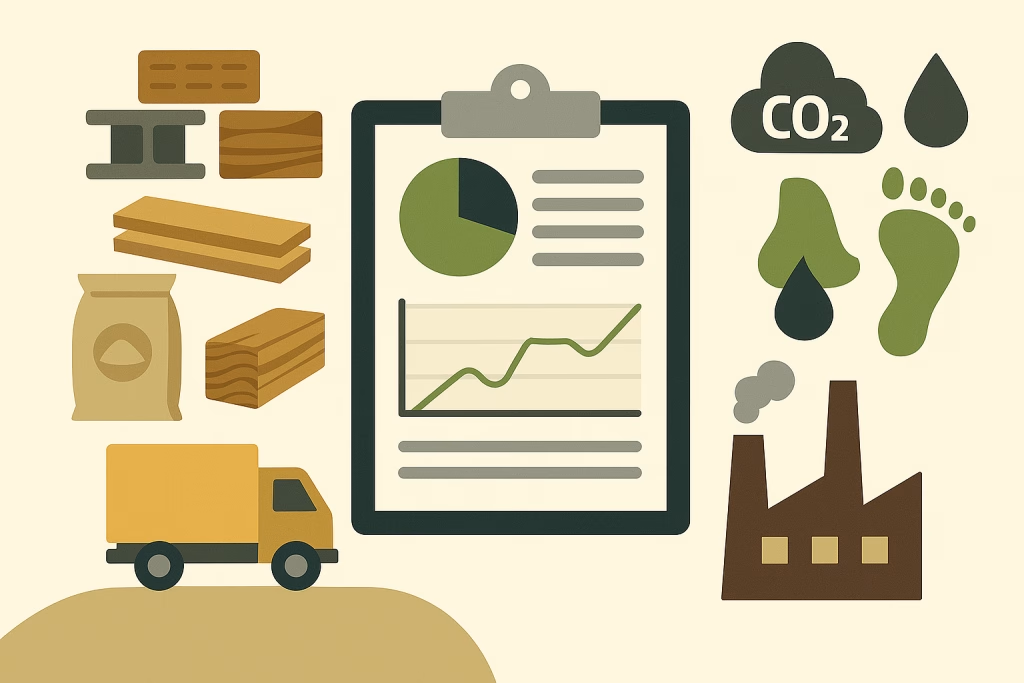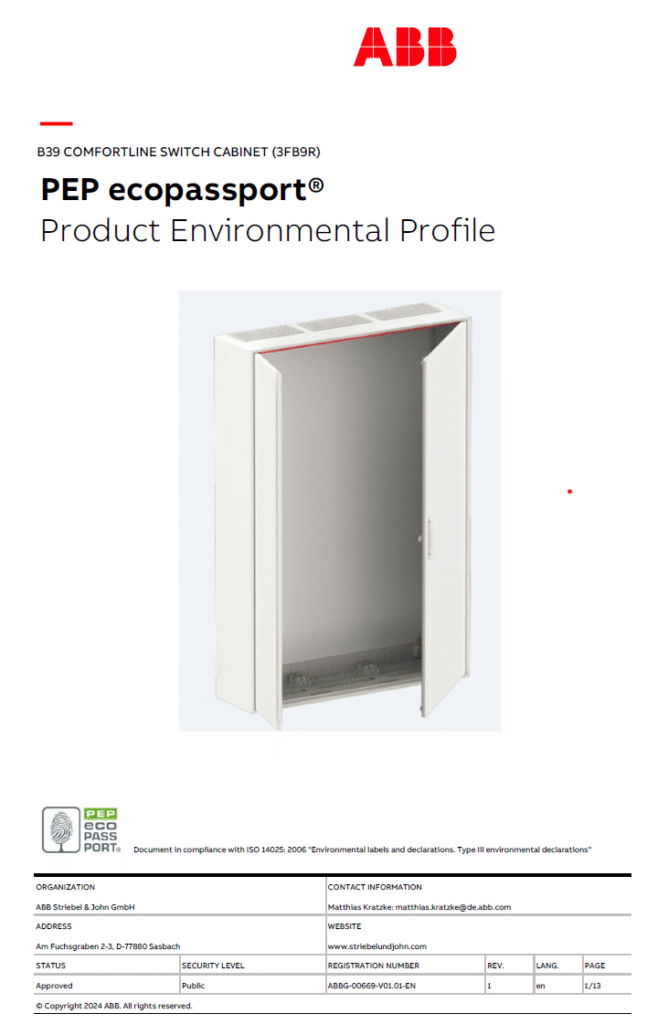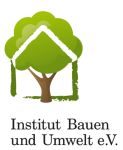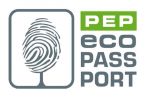Environmental Product Declarations (EPD) That Drive Business Results
Turn sustainability into competitive advantage with verified environmental data your customers trust
Environmental Product Declarations (EPDs) are becoming essential for market access, regulatory compliance, and winning sustainability-conscious customers. Our EPD consulting services help manufacturers create credible, verified environmental fact sheets that meet international standards and unlock new business opportunities. So far more than 100’000 EPDs have been published.

Why Choose ESU-services as EPD consultant for Your EPD?
- 15+ years experience creating EPDs across industries
- 450+ successful LCA projects completed
- Full-service approach from LCA to EPD publication and verification
- Multi-platform expertise – we find the right EPD system for your needs
Our Services to support environmental product declarations
We offer all necessary steps for creating an EPD:
- Support to choose the best EPD platform for your needs and expectations
- LCA consulting to elaborate the background report.
- Help for platform selection, registration and publication support
- Create the EPD following EN 15804 (construction products) or EN 50693 (electric and electronic products) and ISO 14025
- Support to find suitable third-party verification through approved verifiers
Best for: Companies creating their first EPD or needing full-service support
EPD Automation for Multiple Products
Streamlined, automated EPD creation for companies with large product portfolios.
- Excel-based master inventory system with VBA automation
- SimaPro integration for bulk processing
- Standardized templates for consistency
- Bulk testing and validation
Best for: Manufacturers needing dozens or hundreds of EPDs

Further services related to EPD:
- We participate in the development and update of product category rules (PCR) i.e. for electricity and heat.
- You plan to elaborate the EPD on your own? We provide the SimaPro software, training and coaching to help you.
- Furthermore, we verify EPD’s according to the international EPD® system and can support you as an approved individual verifier for different EPD platforms.
Choose an EPD platform for publication of EPD
To register and publish the product fact sheets on an EPD platform, the client must register with an operator. ESU-services assists you independently to find the best EPD platform according to your needs and expectations. Most of them work within the Eco-Platform network. So far, we have mainly worked with the international EPD®system, IBU-Bau, KBOB and PEP (but are also open to other organizations shown below). The fees are set by this organization and depend, among other things, on the number of EPDs published. The following table shows platform operators for registration and publication of EPDs with which ESU cooperated in the past.
| System | Region | Focus | |
|---|---|---|---|
 | The international EPD®system (environdec) | GLO, English and other languages | All types of products |
 | EPD South-East Asia | Asia | All types of products |
 | IBU-Bau | DE and German speaking, | Building products |
| KBOB, ecobau and IPB | CH, German and English | Building products | |
 | PEP ecopassport (product Environmental Profile) | FR, GLO | Electric and electronic products |
 | Product environmental Footprint (PEF) | EU | Consumer products |
Questions for providing an offer for EPD consulting
ESU-services have a great deal of experience in creating environmental product declarations. The actual cost for publishing an EPD depends on the following factors (please provide more information if not yet available):
- Which products (and how many) should be declared?
- Can you send a link or a product description for the products to be declared?
- Which PCR should be applied or in which type of product category does the products fall?
- Who is requesting the EPD and have they made any requirements regarding platform or standards to be applied?
- Which platform is foreseen for the EPD publication (e.g. environdec, IBU, KBOB, PEP ecopassport, etc.) and general programme requirements?
- How many EPDs for similar products can be based on one LCA report?
- Which stages (A-D) and substages of EPD reporting in upstream, core, downstream and reuse sections should be modelled?
Start your EPD journey and ask us for support:
Helping to collect the input-output data for an EPD
For each life cycle stage, information on the amount and type of energy and materials used must be provided by the customer per reference unit (e.g. kg of product). ESU-services guides you through the process:
A1 Materials
- Input of raw materials
- Type of product (e.g. plastic granulate or ready-made plastic part)
- Auxiliary materials such as chemicals, metals, plastics, or other auxiliary materials e.g. detergents, solvents, minerals, rare earths, packages, metals, plastics, etc.
A2 Transports
- Transport of materials from previous stage to location where products are produced
A3 Processing at the commissioner
- Electricity use from grid (classified by country)
- Heating energy (specified by energy carrier e.g. heating oil, natural gas, wood, charcoal, biogas, etc.)
- Water use (classified by country)
- Losses of materials as waste or for recycling during processing
- Direct emissions to air
- Effluents / wastewater (classified by type of treatment and concentration of pollutants)
- Disposal of wastes (classified by type of material and treatment)
C1 De-construction demolition (e.g energy for dismantling)
C2 Transport to waste processing
C3 Waste processing (e.g. separation of materials for recycling
C4 Disposal (e.g. incineration, landfill)
D Reuse-Recovery-Recycling-potential (e.g. reuse with replacement of new products, recycling with provision of secondary materials, energy recovery during incineration)
EPD automation
We offer a streamlined, automated approach to generating Environmental Product Declarations (EPDs), ensuring accuracy and efficiency in sustainability reporting if you wish dozens or hundreds of EPDs.
Our process begins with Goal and Scope Definition, where we establish system boundaries and select the appropriate Product Category Rules (PCRs) for analysis. We then move to Macro Modeling and Calculation, using SimaPro and an Excel-based master inventory sheet. This step is fully automated via VBA macros, enabling seamless data import and precise environmental impact assessment. Next, our Automated Template Population ensures that all relevant indicators are correctly formatted for effortless submission via the EPD Importer.
In the refinement phase, we enhance automation using the SimaPro Power Package, allowing collaborative work on large-scale LCA projects. We further refine macros, validate performance with bulk testing, and expand functionality to support diverse product groups. Standardized report templates are developed for consistency, reducing manual effort while maintaining high-quality documentation. Finally, our automated report population integrates product-specific data into structured templates, ensuring efficiency and accuracy in EPD reporting.
By combining automation, precision, and scalability, we provide a reliable solution for companies seeking to simplify EPD creation while maintaining compliance with international standards.
Publish environmental information outside the EPD system
Furthermore, ESU elaborated tools and feasibility studies for environmental information
- Our web tools facilitate product declarations for transports and energy products used in Switzerland.
- Within the labelling of renewable energy we elaborate an easy-to-use key parameter tool for calculating an environmental product declaration of electricity, heat, biomethane and cooling labelled with as naturemade star.
- We developed a simple Excel model to calculate the environmental impacts of hydropower plants.
- We investigated the feasibility of providing environmental information for consumer products on behalf of the Federal Office for the Environment (FOEN).
- We also support simplified tools such as the product carbon footprint (PCF) for products and process or the corporate carbon footprint (CCF) for companies and organisations.
- We follow up closely the developments of European Environmental Footprint methods developed by the European Commission
Selected publications of ESU-servics
Meili C., Jungbluth N. 2019 – Lessons learned from assessing life cycle impacts for an environmental product declaration: Examples for run-of-river power plant (conference paper) and presentation at the sustainable built environment conference 2019.